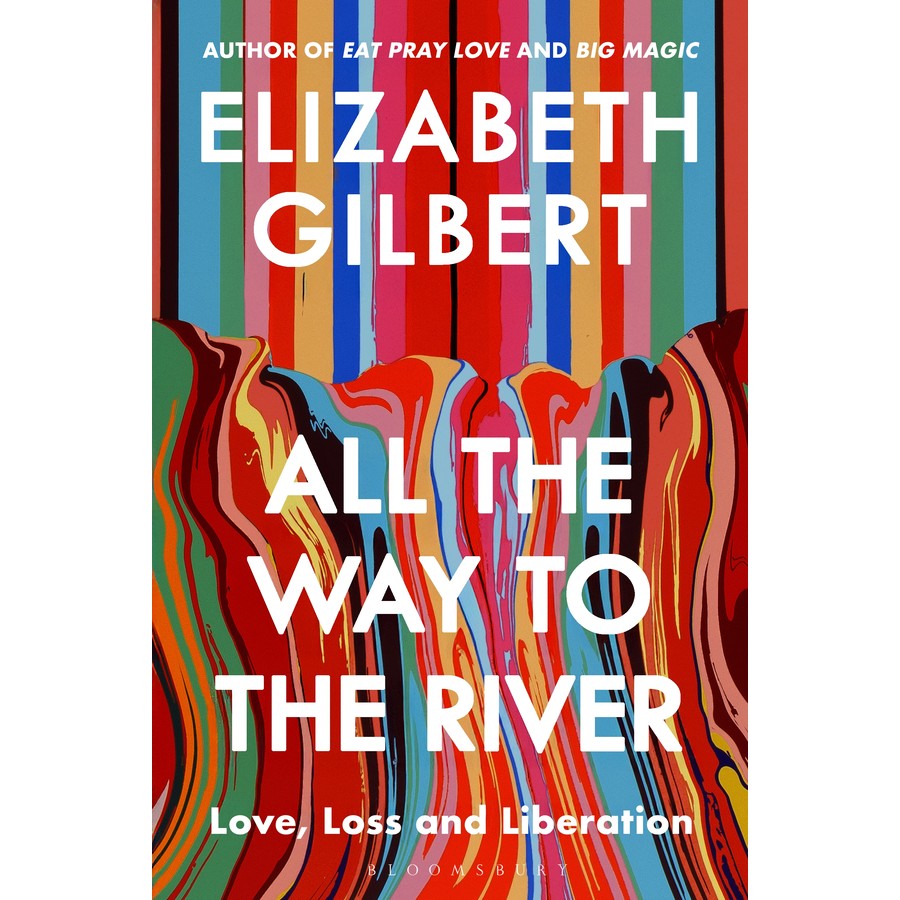All the Way to the River: quick links
Elizabeth Gilbert, author of the bestselling memoir Eat Pray Love, returns with another deeply personal narrative in All the Way to the River. The book chronicles her decades-long friendship with Rayya Elias, which evolves into a romantic relationship after Rayya is diagnosed with terminal pancreatic and liver cancer.
Rayya and Gilbert are fast, if unlikely, friends. Gilbert is a polished, well-to-do, workaholic, people pleaser who seeks out Rayya’s hairdressing skills. Rayya, meanwhile is bold, in addiction recovery, and spends three days a week at the beach.
They quickly grow inseparable and obsessed with one another. They’re also in love, a fact Gilbert hides for 16 years in order to preserve the marriage to the man she met at the end of her Eat Pray Love journey.
All the Way to the River: questions of of self-worth
Eat Pray Love has a striking presence in All the Way to the River. Gilbert’s sudden wealth from book royalties and movie rights distresses her. She describes compulsively giving away money – paying off loans, funding weddings, vacations, and strangers’ medical debt.

‘My innate lack of self-worth and inflated sense of obligation collided with overnight wealth,’ she writes. She also offers Rayya rent-free accommodation in her converted church so Rayya can write her own memoir.
Gilbert becomes something of a white saviour, as she explains: ‘I lured her out of New York City, taking her away from the recovery community that had been her spiritual family for years.’ Alone, all Rayya had to do was write a book ‘she wasn’t sure she could write, thereby kicking up all her deepest insecurities and fears’.
Rayya does write the book, but she also slides out of sobriety, beginning with secret alcohol use, which snowballs into her keeping bottles of 47% alcoholic bitters all over her house.
All the Way to the River: drug binge
It snowballs further once Rayya is diagnosed with terminal cancer. Both women go on a drug binge and Rayya supplements her prescribed opioids with cocaine, so that she can stay awake. Gilbert is a self-identified enabler, buying the cocaine on Rayya’s behalf.
Their relationship deteriorates. Gilbert is unable to sleep because Rayya purposely interrupts it, and she is in turns mean, paranoid, and self-pitying. Rayya gets kicked out of hospice care for being too aggressive. Gilbert’s sleep deprived thoughts turn to disturbingly realistic plans of homicide and suicide.
At this time, writes Gilbert, ‘I was still portraying Rayya as a stoic and inspiring hero and myself as the tireless and ever-competent caregiver’. But death is scary and painful. While Gilbert is eventually able to accompany Rayya on her last days, the situation becomes so untenable that she has to leave her, and be willing to leave her forever if Rayya refuses to withdraw from cocaine and excessive opioid use.
All the Way to the River: empathy
Gilbert writes about Rayya with great empathy, and is vulnerable about her missteps in the relationship. Gilbert turns her analytic gaze to herself quite often, diagnosing herself as ‘an addict’ also. In Gilbert’s case, she experiences ‘sex/love addiction’ – a type of ‘process addiction’ which leads her to seek out love as a means of assuaging her anxiety.
Like indiscriminately giving away money, Gilbert manipulates and enables others in a quest to feel okay about herself.
Gilbert’s ruminations are brutally self-critical, but leave little breathing space for the reader to reflect and learn. Reflexivity is an important skill for the memoir writer, and while Gilbert excels in the self-analysis portion, she is less adept in the ways in which her story may spark broader lessons.
When Gilbert does occasionally write to the wider context, it can feel totalising. Addiction is everywhere; and the only lens through which it is interpreted is through Twelve Step programs. Here, an addict is ‘always’ an addict, and the only cure for substance addiction is complete, life-long sobriety. But there are other ways of understanding personal problems and addiction that Gilbert fails to reckon with.
All the Way to the River: spiritualist ethos
Gilbert also has an idiosyncratic spiritualist ethos which will not resonate with all readers. She frequently converses with a responsive God and communes with the dead. These passages, while intriguing, are difficult to interpret.
In one passage, she speaks to Rayya’s cancer cells, who say they’ve been in her liver since birth, waiting for the signal to replicate. This is neither how cells, nor cancer works, but Gilbert is never uncertain in her cosmology. Indeed, she unquestioningly holds a view that in death we unite with our loved ones.
This must feel reassuring, but is narratively distracting and lessens the emotional impact of Rayya’s awful, traumatic death.
Despite a few misgivings, Gilbert tells an honest, engrossing story of an unexpected love. She tells the story of an unstoic death while deftly interweaving the ecstasies and dangers of intimacy.






